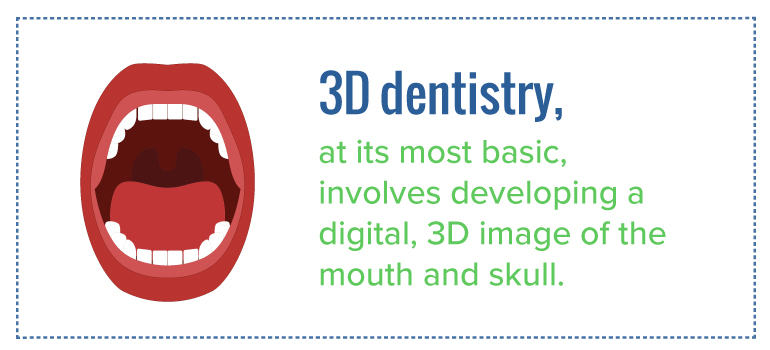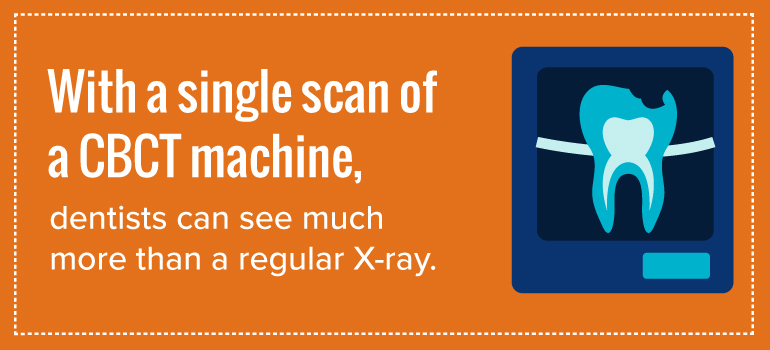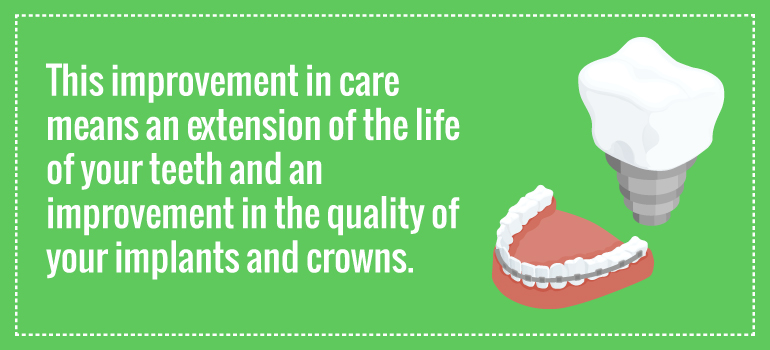
When we think about visiting the dentist’s office, we often think of bright lights, blue bibs, toothbrushes, picks, drills and bubblegum toothpaste. However, advanced imaging utilizing CBCT technology is slowly but surely making its way into dental offices across the United States. Because of their wide recognition as contributors to quality dental care, CBCT machines are now becoming more commonplace among technologically up-to-date offices across the world.

3D dentistry, at its most basic, involves developing a digital, 3D image of the mouth and skull. Traditional X-rays only develop a 2D picture of your mouth, while other methods took longer bouts of radiation to create a detailed picture, and were more unpleasant and intrusive to the patient.
3D dental images are most often used for diagnosis and treatment planning. Being able to see the mouth in three dimensions allows the dentist to better and more effectively formulate an approach to treat dental conditions.

What are the advantages of 3D Dentistry?
Some of the patient benefits of 3D dentistry include the following:
Diagnostic Accuracy: Three-dimensional scans can catch problems 2D scans simply can’t by differentiating between many types of tissue. Pathology, infections, and abnormal sinus anatomy and joint dysfunctions can all be properly visualized and identified with 3D CBCT imaging. This means patients are properly diagnosed the first time and can get appropriate help much sooner than they would with previous methods.
Minimal Radiation Exposure: Repeated prolonged exposure to radiation can cause eye damage, the development of malignancies and other health risks, which is why new medical technologies seek to reduce patient exposure. When compared to traditional medical CT scans, 3D CBCT scans emit substantially less radiation, reducing the dosage up to 98.5%.
Non-Intrusive: No need to bite down on a mold or piece of plastic. The CBCT can scan your entire head without you needing to do anything. This is especially helpful for patients with particularly sensitive gums or teeth, as well as pediatric patients.
Lower Cost: Going to a third-party imaging center for a medical CT scan can be extremely expensive. Bringing in a 3D CBCT dental imaging device provides all the technology into one place, eliminating the middle-man and saving you money.
Short Scan Time: A typical 3D CBCT scan takes around ten seconds to complete, meaning your dentist can see and solve problems more quickly than ever. An in-house 3D CBCT scanner at your dentists’ office also means you don’t need to go to a third-party imaging company for a medical CT scan.

